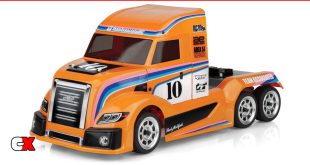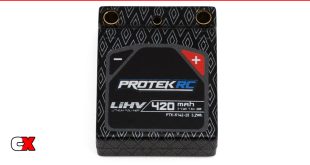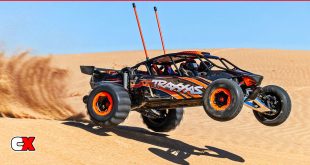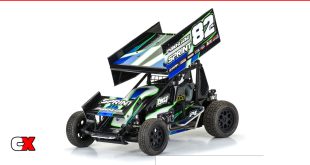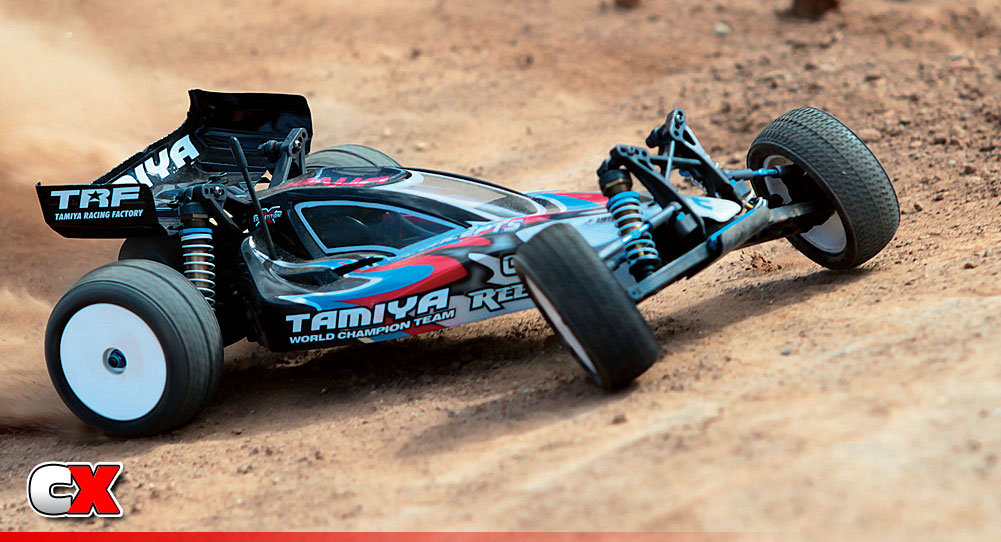
Tamiya has been on the forefront of the RC world for many years. Over the years they have released a stable of FWD vehicles, Minis, and F1s with extreme scale realism. I can recall my first RC car (the Subaru Brat) about, well, a long time ago, and how excited I was to build and drive it. To this day I still crave the cool chassis designs and incredibly detailed bodies, but now I have another reason to enjoy them…a full TRF (Tamiya Racing Factory) lineup of performance vehicles. The TRF201 is Tamiya’s latest 2WD track terror and it’s already scaring the local natives that aren’t driving one! Join me on this exciting adventure as we build, tune and test another of Tamiya’s incredible offerings.
THE FACTS
WHO MAKES IT: Tamiya
WHO IT’S FOR: Intermediate to Advanced Racer
HOW FAST: 23.05mph
HOW MUCH: $340
BUILD TYPE: Kit
VEHICLE TYPE: 1/10-scale electric buggy
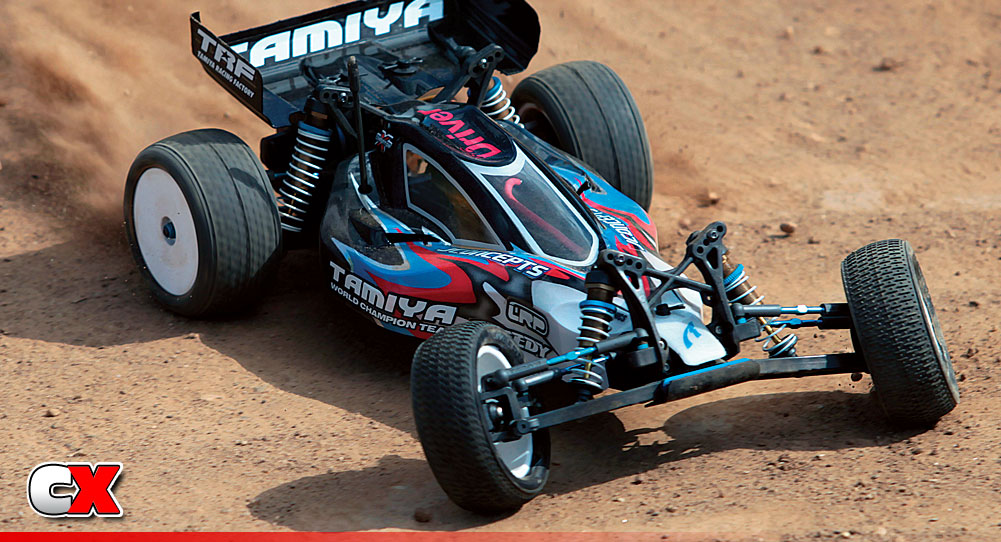
WHAT YOU NEED TO KNOW
• The chassis shape is designed for better COG (center of gravity). The servo, battery and motor mount are mounted down the chassis’ centerline while the receiver and ESC off to the sides. The chassis sides are slightly angled to improve ground clearance while cornering.
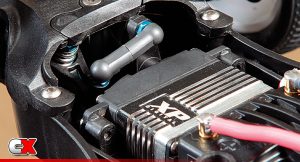 • The TRF201 comes with a complete set of Tamiya’s Aeration Dampers. They include threaded bodies for easy ride height adjustment. To aid in building super-smooth shocks, the caps include a bleeder hole (these will need to be drilled out if you choose to build the shocks this way). These dampers are wrapped with Tamiya’s new coil springs designed specifically for the 201.
• The TRF201 comes with a complete set of Tamiya’s Aeration Dampers. They include threaded bodies for easy ride height adjustment. To aid in building super-smooth shocks, the caps include a bleeder hole (these will need to be drilled out if you choose to build the shocks this way). These dampers are wrapped with Tamiya’s new coil springs designed specifically for the 201.
• The front axles are compatible with wheels using metric size ball bearings. The rear axles will accept most aftermarket wheels as well.
• The TRF201 comes with a standard 3 gear transmission. The slipper unit consists of a dual-sided slipper clutch mated to a 79 tooth spur gear. The incredibly smooth ball differential powers a set of Tamiya’s 3mm CVD axles to ensure long-lasting performance.
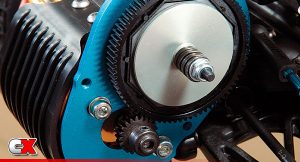 • The battery compartment includes user-friendly thumbscrews to insert or remove the battery. A trick transponder mount bolts to the top of the battery strap. Yes, I know, most hardcore racers (and some, umm, soft-core racers) have a personal transponder at their disposal. If you’re one of the very few that doesn’t’ have one, this mount is perfect for you. It certainly prevents having to drill a hole in the front window of your professionally painted body.
• The battery compartment includes user-friendly thumbscrews to insert or remove the battery. A trick transponder mount bolts to the top of the battery strap. Yes, I know, most hardcore racers (and some, umm, soft-core racers) have a personal transponder at their disposal. If you’re one of the very few that doesn’t’ have one, this mount is perfect for you. It certainly prevents having to drill a hole in the front window of your professionally painted body.
• Modular design should make repair and maintenance a cinch.
• Originally, the TRF201 was to come without a body or wing. Thankfully that decision was overruled (well, at least for the US market) and Tamiya not only supplied a body and wing with the 201, it completely compliments the style and flow of the car. Jaw Designs worked his sickness with a killer coat of paint! Hot hot hot!

DESIGN ANALYSIS
• The 201 comes with the full TRF treatment. Blue, titanium turnbuckles stretch to all four corners and are attached using Tamiya’s heavy duty ballcups. Blue aluminum front hinge pin brace, motor plate and ball ends are also included.
• Every plastic part is molded to perfection. The chassis, front top deck and rear lower deck all fit with absolute precision. Suspension arms and shock towers drop right into place and the transmission halves slide together without any issues.
• Tamiya’s shocks are known as some of the smoothest in the industry, and the ones on the TRF201 are no exception. These bottom-load beauties build like no other, and even include a bleeder cap (as mentioned earlier, you will need to drill out the hole if you choose to use this feature). The threaded bodies and blue aluminum adjuster make setting your ride height a simple, precise task.
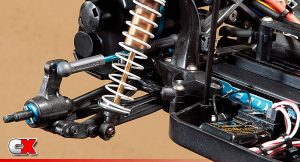 • The motor mounting area includes a 3mm thick motor plate. To help dissipate heat, the rear motor guard has multiple fins molded into it. This is a pretty smart design as it allows a huge amount of airflow while keeping the openings small enough to prevent dirt from clogging or entering the motor area.
• The motor mounting area includes a 3mm thick motor plate. To help dissipate heat, the rear motor guard has multiple fins molded into it. This is a pretty smart design as it allows a huge amount of airflow while keeping the openings small enough to prevent dirt from clogging or entering the motor area.
• The rear suspension arms are angled to allow greater ground clearance through bumps and ruts on the track. While not a new design, this should give the TRF201 a huge advantage on rough tracks.
• Space on the chassis seems limited but there’s just enough room to mount almost any receiver and ESC. Tamiya has done its homework in this area by efficiently minimizing any extra chassis space that isn’t necessary. The steering setup is bulletproof and rolls on a full set of ball bearings. The adjustable servo saver is tucked away under the enclosed, upper top deck.
ITEMS NEEDED
– 7.2 or 8.4V stick pack, or 2S 7.4V LiPo
– Electronic speed control
– Servo
– Brushed or brushless motor
– 2-channel radio system
– Battery charger
– Tires
– Paint
ITEMS USED
+Reedy 2S 40C+ LiPo pack
+LRP SXX ESC
+Team Associated XP DS1313 servo
+Team Icon Racing 8.5 Brushless Motor
+Airtronics M11x
+LRP Pulsar Competition 3
+JConcepts BarCodes (gold compound)
TOOLS INCLUDED & NEEDED
+1.5, 2 and 2.5mm hex keys, turnbuckle wrench, wheel wrench
– A quality Metric Allen Driver set is recommended
PROS & CONS
+ Simple efficient design
+ Sleek, sexy body
+ Parts fitment is top notch
+ Hex-head screws!
+ Tons of tuning options built into the suspension
+ A slew of ‘factory team’ level hop-ups already included
– Front suspension arms flex quite a bit
– Similar design components to other vehicles out there
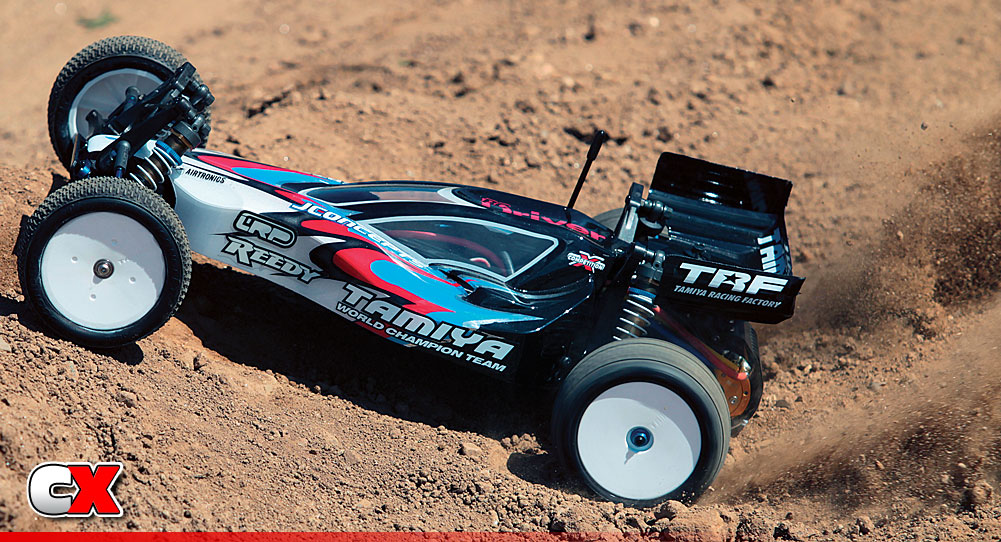
PERFORMANCE
Test Conditions: Smooth with high traction
STEERING Understeer
Initial tests were with some spare ribbed front tires I had in my pit box and I found that the TRF201 had a bit of a push going into the corners. This wasn’t that much of a problem as it made it easy to drive, but I found myself losing ground to some of the other cars on the track. A few minor suspension changes helped, but I still felt like it needed more steering. I bolted on a set of JConcepts Bar Codes and the 201 went from a bit pushy to very aggressive! Front and rear traction was now off the charts, and the buggy was carving the track like a freshly baked Thanksgiving turkey! I was surprised by the incredible difference the tires made, but think I have found the rubber that will become a permanent attachment to my 201.
ACCELERATION Excellent
Because of their light weight and quick response, 2WD buggies typically require a little finesse when driven with high-power motors. The Tamiya, however, when paired up with a finely tuned suspension and the JConcepts rubber, was not only easy to drive, but it was easy to drive fast! You still need to be a little tender on the throttle from a standstill, but square the 201 up out of the corners and this buggy launches down the straights with incredible precision. The LRP SXX efficiently supplies the Reedy-juice to the Team Icon Racing motor which, by the way, is one of the smoothest motors I’ve ever driven.
BRAKING Excellent
With any 2WD vehicle, the rear wheels do all the braking. This can sometimes provide some excitement when it comes time to slow a vehicle down but, thanks the LRP SXX, it’s rather hohum. The brakes on the SXX are smooth and completely adjustable so you can dial them in to your liking. The 201 stays quite stable under heavy braking with just a touch of wiggle, but you really only see that in panic situations.
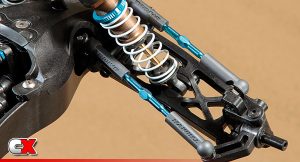 SUSPENSION Excellent
SUSPENSION Excellent
Tamiya’s optimized suspension setup turns almost every rut and bump into a glass-smooth surface. A washboard section of the test track had a single ‘smooth’ line through it and, if you didn’t hit that line, you were riding the bucking bronco. After a couple laps I purposely missed the line to see the 201’s reaction. While it did buck around a bit, the 201 kept its composure and stayed pointed straight ahead—a true testament to the R&D work that went into designing this car.
JUMPING Excellent
As with all off-road racing cars, the ability to jump low and level is a gift. Clicking off fast lap times is a result of hitting the jumps perfectly and without any drama, and the TRF201 scores big points in this category. I did encounter a little chassis-slap on some of the bigger jumps (when I didn’t land the backside of a jump just perfectly), but a little adjustment in the ride height (from the manual’s stock setting) fixed that problem.
DURABILITY Excellent
The old saying goes, “To finish first, first you must finish.” That puts a lot of pressure on designers to not only build a race-winning vehicle, but to make sure it’s lightweight and extremely durable. I’m happy to say that after a day’s running I had zero issues with the TRF201. Shocks felt silky smooth, differential didn’t feel gritty and there were no cracks, bends or breaks in any of the plastic or aluminum parts. The 201 feels rock-solid and should easily finish a qualifier or main without incident.
SPECS & TUNING OPTIONS
TAMIYA TRF102
DIMENSIONS
LENGTH: 11.5 in. (292mm)
WIDTH: 5.7 in. (145 mm)
WHEELBASE: 10.9 in. (276mm)
SUSPENSION
• Shock position—4 holes on towers, 3 on suspension arms
• Camber (F&R)—turnbuckles
• Roll— multiple camber rod locations front and rear
• Ackerman—2 positions
• Toe— turnbuckles
• Wheelbase—F & R hubs can be spaced
DRIVETRAIN
• Diff stiffness—grease or silicone diff fluids
• Slipper clutch—Tension
MAINTENANCE & TUNING TIPS
• After your first full battery, check the slipper clutch and differential to make sure both are operating properly.
• If you are a hardcore racer, consider rebuilding the differential after three or four races to keep it working at optimum performance.
• The shock springs will settle after just a few runs. Make sure to check ride height often.
• Because the servo saver is tucked away under the front top deck, it is a bit difficult to get to. Give it another ¼ turn to ensure it is tight enough.
THE LAST WORD
Tamiya is a quality company that spares no expense in putting out quality rides. After owning a ton of Tamiya vehicles and racing most of them in some form or another, I really didn’t expect the TRF201 to be any different—just the next level of awesomeness. It’s easy to build, easy to maintain and, like most 2WD buggies, rewards you with a good time if you’re nice to it. I would have liked to see a few new next-level TRF features, but as it sits it’s a really good racing machine. And in the end that’s really all that matters.
LINKS
Tamiya, tamiyausa.com, (800) TAMIYA-A
Team Associated, teamassociated.com, rc10.com, (949) 544-7500
Reedy, a division of Team Associated, teamassociated.com, (949) 544-7500
LRP, distributed by Team Associated, teamassociated.com, (949) 544-7500
Team Icon, distributed by West Coast RC Raceway, wcrcr.com, (714) 739-4298
JConcepts, jconcepts.net, (352) 241-4976
Airtronics, airtronics.net
Jaw Designs, jawdesigns.com
 CompetitionX CompetitionX is the most up-to-date source for RC Car News, Reviews and Videos for Radio Control. We also have the most comprehensive Manual Database on the web.
CompetitionX CompetitionX is the most up-to-date source for RC Car News, Reviews and Videos for Radio Control. We also have the most comprehensive Manual Database on the web.

